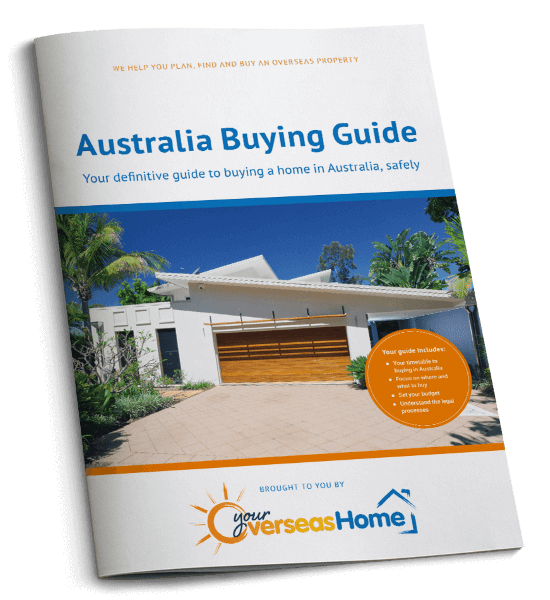If you’re an Australia permanent resident and property-owner, you might be considering buying an investment property to rent out (or even letting your own). With yields ranging from 3.3% to 5.8% in the country’s major cities, there’s a real potential to get strong returns on renting out your property in Australia. As with many legalities, there are slight differences between various states and territories. Today, we’re covering the main areas you need to know, no matter where you are in Australia. Find out about tenancy types, rent regulation, lease agreements and more.
Who’s allowed to rent out a home or unit?
Anyone who is a property owner can rent out their home or property. Of course, it’s much easier for citizens and permanent residents – you can buy any kind of property and rent it out. Non-residents cannot buy resale property and must also pay Australian tax on their rental income.
You can also rent out any properties you own jointly with someone else. How you split the rental income’s decided by how you own the property. If it’s joint ownership – 50% each – then you’ll split it along those lines. If you’re tenants in common with unequal interests in the property (eg 30% and 70%), the rental income is split like that.

If you’re renting out your property in Australia, you’ll need to decide between a fixed-term and periodic tenancy.
What are the main types of tenancies?
As in the UK, there are two main types of tenancy. These are:
- Fixed-term tenancy: These are for a set, agreed length of time – generally six or twelve months. Generally, they’ll automatically move to a perio tenancy if no notice is given.
- Period tenancy: These are on a rolling basis, normally fortnightly or monthly, automatically renewing until one of the parties gives in notice.
Your residential tenancy agreement should be signed and dated by you and your tenant. In Australia, it will typically include the address and type of property, the tenancy term and type, the amount of rent to pay and when it’s payable. If you’re including a bond (deposit) – more on that later – you should mention this.
There are two main types of tenancy: fixed and periodic. In some states, you must use an official lease agreement format.
To save any disputes further down the line, it’s also good to include who is responsible for repairs and whether or not your tenant can sublet. It’s also helpful to your tenant to include instructions on how to give their notice.
In some areas, you’ll need to use a standard rental form from the local government. In Western Australia, use Form 1AA; in New South Wales, use the standard residential tenancy. In Victoria, you can draw up your own agreement, but it must accurately reflect the government sample one.
Can I charge a rental bond?
If you’re renting out your property in Australia, you can charge a bond. This is the same as a deposit in the UK, held against potential damage. It differs between states and territories.
If you’re sending rental income to or from the UK, you risk losing thousands to moving exchange rates – the GBP and AUD often rise and fall at opposite times due to reliance on European and Asian markets respectively. Find out how you can lock in the exchange rate by speaking to the only property-specialist currency company, Smart Currency Exchange.
In the Northern Territory, New South Wales, Tasmania and Australian Capital Territory, you can’t ask for more than four weeks’ rent. There are more specific rules for the remaining parts of the country:
- South Australia: If the weekly rent’s under $250, you can’t ask for more than four weeks’ rent. If it’s more than $250, it can’t be over six weeks’ rent.
- Western Australia: You can’t charge more than four weeks’ rent if the weekly rent’s up to $1,200. For anything over, you can charge six weeks.
- Victoria: If the rent’s less than $350 a week, the bond can’t be more than a months’ rent. If it’s higher, you can choose a higher bond.
- Queensland: If the weekly rent is below $700 a week, it can’t be more than four weeks’ rent. If it’s higher than $700 a week, there’s no limit.
- Tasmania: The bond can’t be more than four weeks’ rent.
What do I do when I receive a rental bond?
Once you receive it, you’ll need to deposit it with a specified authority and sometimes provide a receipt. The only exception is the Northern Territory, where you hold it in trust yourself.
| State/Territory | Receipt? | Where to deposit? |
| South Australia | Yes, from the landlord within 48 hours | CBS within two weeks |
| Western Australia | Yes, from the landlord immediately | Bond Administrator within two weeks |
| Northern Territory | Yes, from the landlord immediately (cash, cheque, card payments)
No (electronic transfer) |
Landlord holds it in trust; if you leave the Northern Territory for more than 14 days, you must pay it to a person approved by the Commissioner of Tenancies. |
| Victoria | Yes, from RTBA within 15 business days | RTBA |
| New South Wales | No | Rental Bonds Online |
| Queensland | Yes, from the landlord immediately | RTA within ten days |
| Tasmania | Yes, from Service Tasmania immediately | Rental Deposit Authority |
| Australian Capital Territory | Yes, from the ACT Revenue Office within reasonable time | ACT Revenue Office within two weeks |
Setting the rent
When renting out your property in Australia, you’re free to set the rent at any amount you see fit. How frequently you can increase it depends on local laws for period tenancies. For fixed-term tenancies, you mostly can’t change it.
When renting out your property in Australia, you’re free to set the rent at any amount you see fit. How frequently you can increase it depends on local laws for period tenancies.
In New South Wales, you can increase the rent as many times as you wish, as long as you provide 60 days’ notice. In the Australian Capital Territory and South Australia, you can increase it one every 12 months, with 60 days’ notice. In Queensland, Victoria, Tasmania and Western Australia, you can increase it once every six months with 60 days’ notice. Finally, in the Northern Territory, you can increase the rent every six months with 30 days’ notice.
Before your tenant moves in
You and your tenant must conduct an inspection together by law. This means going around and recording the condition of the property. It serves as a good record if you do have any disputes in the future over damage and repairs. You can contact your state or territorial government for their recommended inspection report format.
If you’re thinking of buying a property together with relatives as rental investment, read our Guide to Buying with Family to find out how to joint ownership works.
How can you end a tenancy?
In most cases, you can only end a tenancy early if the tenant is causing issues, such as damaging the property or not paying rent, or if you intend to move into the home. For fixed-term tenancies, you can only have the tenant leave by mutual consent. They or you will usually have to give notice before the end of a fixed-term tenancy. If not, it’ll automatically transfer into a periodic tenancy.
Maintenance and repairs
When renting out your property in Australia, you will be responsible for its maintenance. For example, if there is a leak or an essential service breaks down, you’ll need to fix it. If your tenant causes undue damage, you can take money from the bond when they leave. Likewise, you can expect from your tenant that you keep it in a state of reasonable repair.

The Australia Buying Guide takes you through each stage of the property buying process, with practical recommendations from our experts who have been through the process themselves. The guide will help you to:






